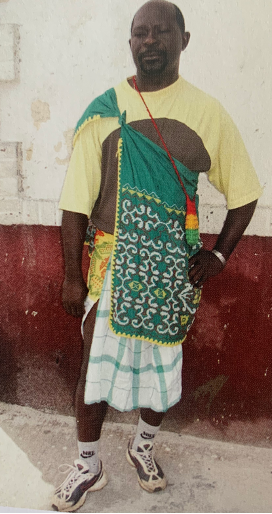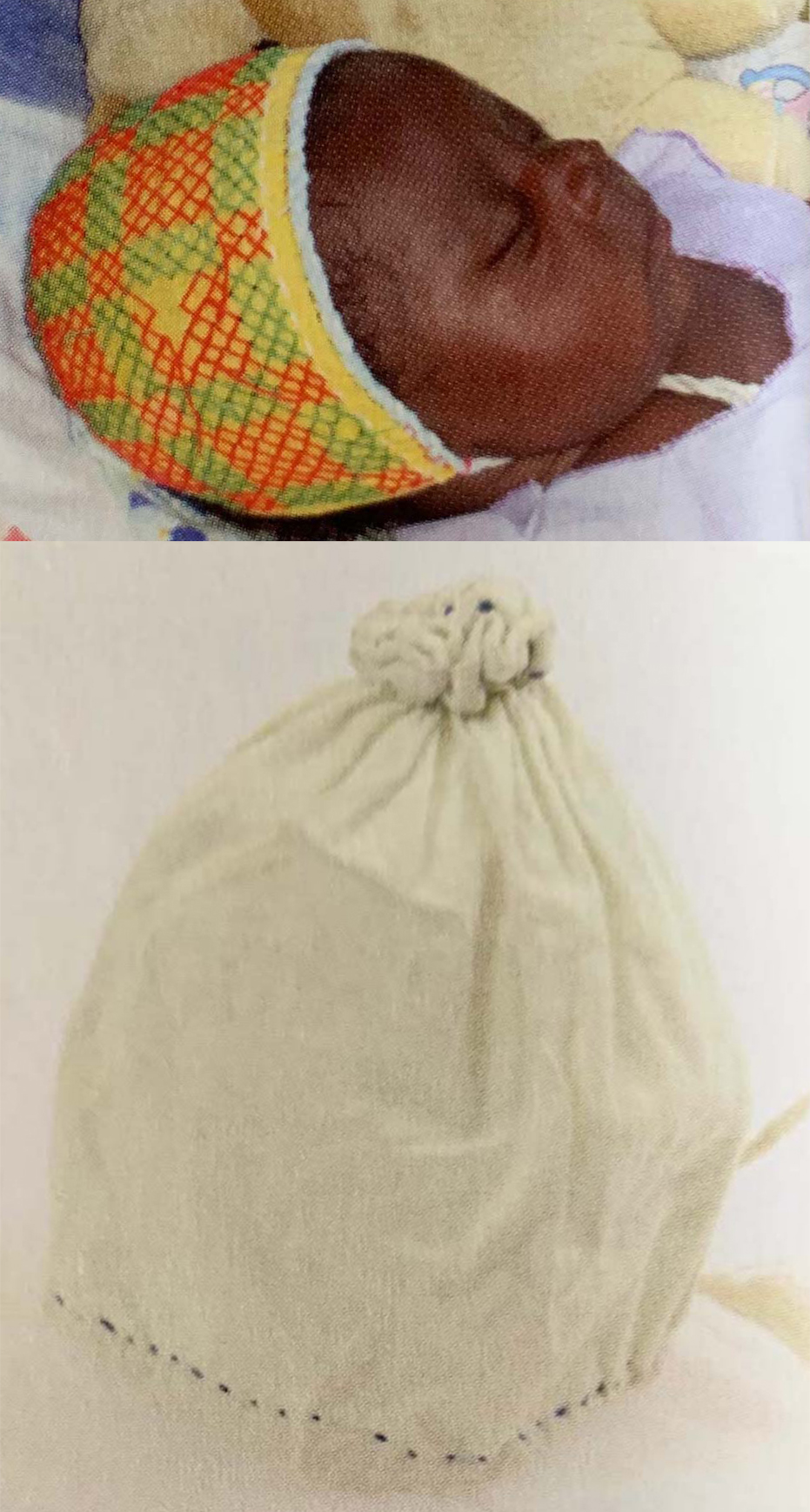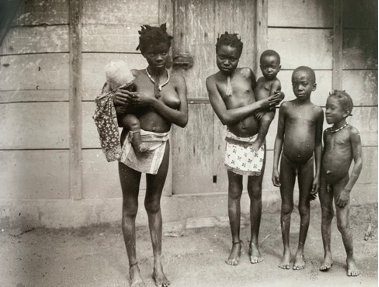Textile
Picture: Thomas Polimé
Textile collection
There are many different garments that are worn by different groups within the Aukan community. A distinction is often made by gender and age. For example, boys and girls are given different pieces of textile that they wear at certain milestones. This difference is also seen with men and women they have their own textiles, although they also wear the same pieces on certain occasions. The traditional garments are worn less and less though or being combined with modern clothing. The traditional cloths tell a story and therefore have a special place in the Aukan community.
Musu
At birth, the baby is often given a musu by the mother. A hat to protect against the cold nights, but also to prevent floppy ears and because it looks nice. Usually this is given by the female relatives of the mother. Sometimes the mother makes this herself.
Kwei
A girl who gets her period for the first time is given a kwei or pubic apron as a sign of her transition from child to teenager. She wears this until she receives her pangi, as a sign of her transition from teenager to woman. Until the 1960s this was worn. The closer to the coast the more it was worn. This was especially in the villages in the upper region of Suriname.
Sepun
A Sepun is a crocheted cotton calf band worn by men, women and children. These are no longer worn daily; nowadays, people wear the Sepun mostly during celebrations. When someone dies, the head grave-diggers wrap new bands around the calves and a few bands are placed on the abdomen. This is always done by people of the same sex as the deceased.
Pangi
The long, rectangular cloth that women wrap around their waists to above the navel is a pangi. Where women used to often have an uncovered upper body, today they wear an upper garment. The pangi is the most commonly worn garment for women in the inland. New pangi’s are worn mainly for festive occasions and ceremonial gatherings. Cloths that are a little older and worn out are used as workwear.
Traditional pangi’s are plaid or striped, but today women are increasingly using plain fabrics. That pangis are an important part of Aukan culture is evident with annual competitions in Paramaribo and elsewhere in the country to decide who has the most beautiful pangi.
Angisa
The angisa is a square cloth, which you use to tie the pangi around your waist. A woman wears her angisa for the first time on her wedding day, if she had her pangi when she transitioned from teenager to woman . So unmarried women did not wear an angisa, a widow was allowed to continue wearing the angisa. In the picture the middle lady is wearing an angisa
Angisa
The angisa is a square cloth, which you use to tie the pangi around your waist. A woman wears her angisa for the first time on her wedding day, if she had her pangi when she transitioned from teenager to woman . So unmarried women did not wear an angisa, a widow was allowed to continue wearing the angisa. In the picture the middle lady is wearing an angisa

Sibi koosi
Sibi koosi means sleeping garment, or %22a sheet to sleep with%22. In this context, it is a white sheet and should not be confused with the robe or pajamas with which you literally sleep. The unstitched cloth is used to wrap the body of a deceased person. The sibi kosi is hung on a pole near the fagapa or faakatiki, the ancestral altar at the gan wang osu (the gathering house of the village).
Kamisa
The kamisa is a rectangular loincloth that is passed between the legs and tied around a string (kamitété) around the waist. Boys used to be given the kamitété as the first sign of manhood, around the age of 11 or 12. When a boy was mature, he was given a kamisa by his parents. Nowadays, most boys and men no longer wear a kamisa, but rather pants.
Kamisa
The kamisa is a rectangular loincloth that is passed between the legs and tied around a string (kamitété) around the waist. Boys used to be given the kamitété as the first sign of manhood, around the age of 11 or 12. When a boy was mature, he was given a kamisa by his parents. Nowadays, most boys and men no longer wear a kamisa, but rather pants.

Apatja
The Apatja was worn in the 1950s and 1960s. With a kamitété (cord), the apatja was tied around the hips. In this way, the cloth falls over the genitals and buttocks.
Apatja
The Apatja was worn in the 1950s and 1960s. With a kamitété (cord), the apatja was tied around the hips. In this way, the cloth falls over the genitals and buttocks.










